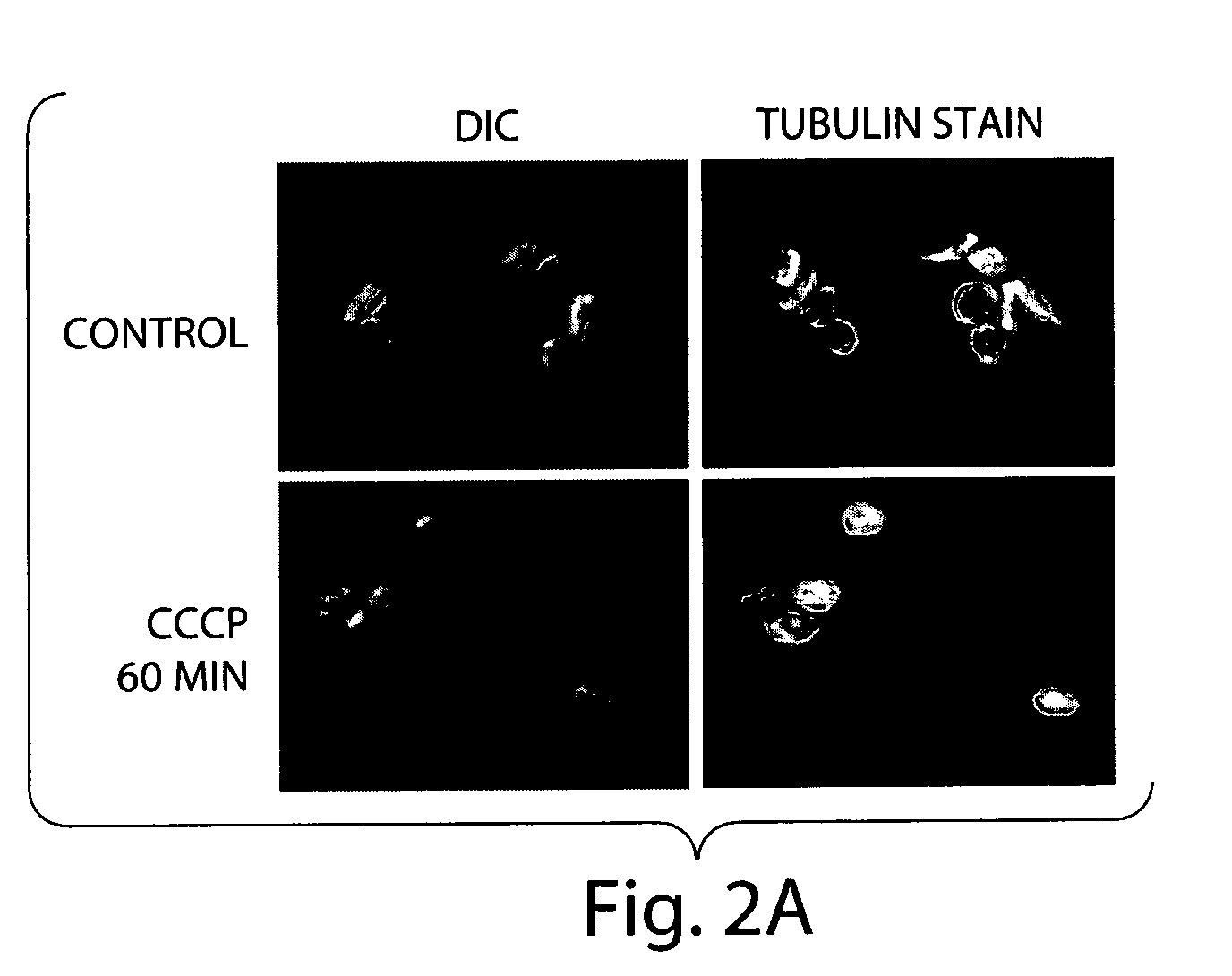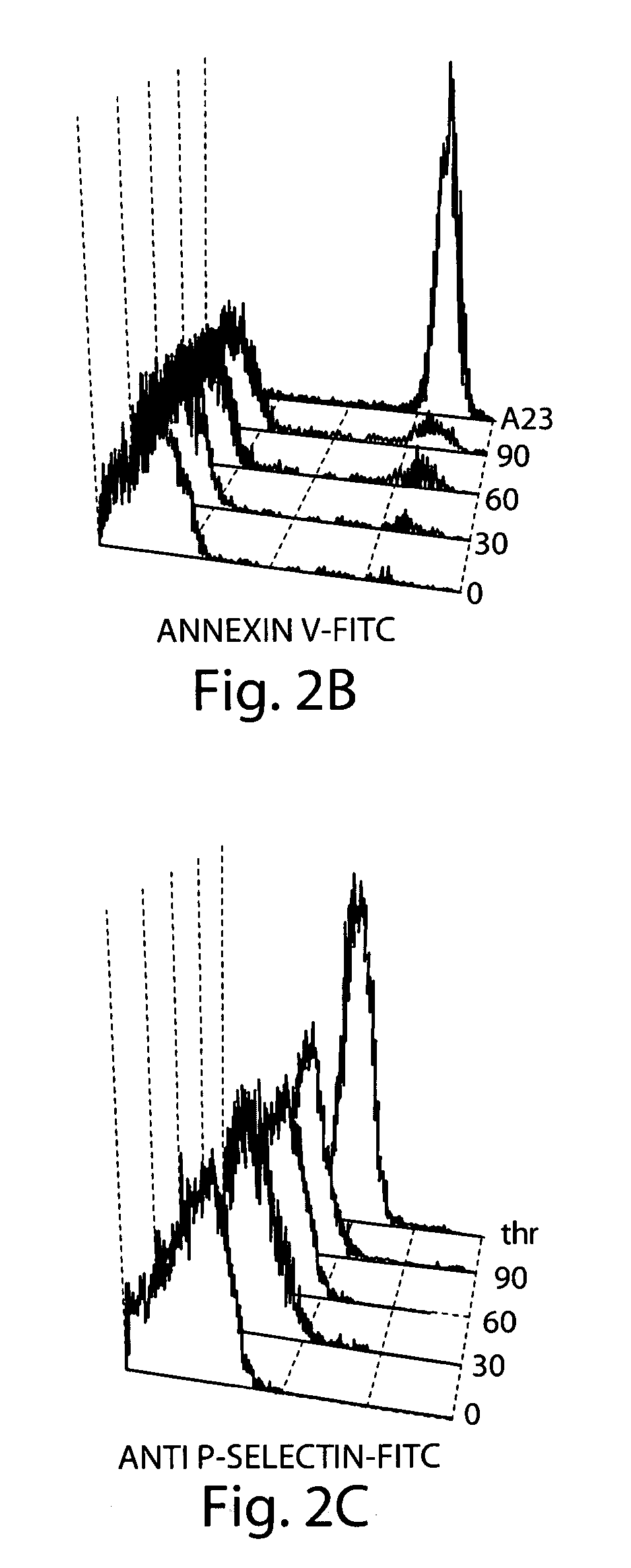Compounds and methods for improving platelet recovery and function
a hemostatic function and platelet technology, applied in the field of compound and method methods for improving the hemostatic function of platelets, can solve the problems of limited shelf life of platelet concentrates, marked impairment of the hemostatic function of such platelets, and impaired platelet structure and function, so as to prevent cleavage or shedding, enhance platelet recovery, and prevent the cleavage of platelet glycoproteins
- Summary
- Abstract
- Description
- Claims
- Application Information
AI Technical Summary
Benefits of technology
Problems solved by technology
Method used
Image
Examples
example 1
[0062] Mitochondrial Damage in vitro Reduces Post-transfusion Recovery of Platelets in Mice.
[0063] Isolated mouse platelets (1.5×109 / ml) were treated with 100 μM carbonyl cyanide m-chlorophenylhydrazone, a lipid-soluble amphipathic molecule that specifically uncouples oxidative phosphorylation in mitochondria, to study the role of mitochondria in platelet storage lesion. Platelet survival was tested upon transfusion into mice. Cyanide m-chlorophenylhydrazone treatment reduced post-transfusion recovery of mouse platelets by about 23%, 61% and 91% when the cells were incubated with the molecule for 30, 60 and 90 minutes, respectively. No significant differences were observed when the lifespan of untreated and cyanide m-chlorophenylhydrazone treated platelets that survived in circulation were compared.
example 2
[0064] Cyanide m-chlorophenylhydrazone Treated Platelets Show a Platelet Storage Lesion-like Phenotype.
[0065] The shape, membrane asymmetry and surface expression of various glycoproteins was studied for cyanide m-chlorophenylhydrazone treated platelets to investigate whether changes similar to those observed in platelet storage lesion were observed. As shown by Differential Interference Contrast (DIC) microscopy, the majority of control platelets were discoid in shape while platelets treated with cyanide m-chlorophenylhydrazone for 60 minutes seldom exhibited this phenotype. This change in shape was confirmed by fluorescence microscopy studies where we observed that cyanide m-chlorophenylhydrazone treatment altered the distribution of microtubules from marginal band to homogeneous patterns. Similar cytoskeletal rearrangements have been reported for spherical platelets due to cellular activation or inhibition of serine / threonine protein phosphatases type 1 and 2a.
[0066] Surface ex...
example 3
[0070] Platelet Storage Lesion in Mouse Platelets.
[0071] To further correlate CCCP-induced changes in platelet function and morphology to platelet storage lesion, mouse platelets stored in plasma (PRP) for an extended period of time were analyzed. Due to limitations in storage containers and therefore difficulties in stabilizing the pH, the optimal conditions for the preparation and storage of mouse PRP were found to be the following: heparin instead of ACD as an anticoagulant, storage at 37° C. instead of room temperature, and agitation. Post-transfusion recovery of platelets stored under such conditions for 16 hours was less than 50% compared to fresh PRP, the survival curves being similar to those observed for platelets treated with CCCP for 60 minutes. Stored platelets underwent shape change, partially expressed phosphatidyl serine, and significantly downregulated GPIbα but not GPIbβ from their surface. In contrast to CCCP-treated platelets, no significant increase in the surfa...
PUM
| Property | Measurement | Unit |
|---|---|---|
| Time | aaaaa | aaaaa |
| Time | aaaaa | aaaaa |
| Time | aaaaa | aaaaa |
Abstract
Description
Claims
Application Information
 Login to View More
Login to View More - R&D
- Intellectual Property
- Life Sciences
- Materials
- Tech Scout
- Unparalleled Data Quality
- Higher Quality Content
- 60% Fewer Hallucinations
Browse by: Latest US Patents, China's latest patents, Technical Efficacy Thesaurus, Application Domain, Technology Topic, Popular Technical Reports.
© 2025 PatSnap. All rights reserved.Legal|Privacy policy|Modern Slavery Act Transparency Statement|Sitemap|About US| Contact US: help@patsnap.com



